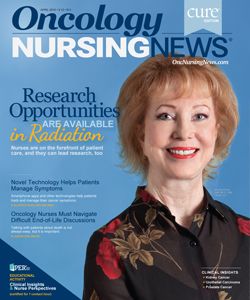Nurses Must Adapt to Meet the Needs of a Diverse Patient Population
Rapid changes occurring nationally and worldwide—including shifts in demographics, languages, epidemiological patterns, and social systems— have direct implications for patient care. These trends are projected to continue, and nurses need to be prepared to care for increasingly diverse patient populations.
Rapid changes occurring nationally and worldwide—including shifts in demographics, languages, epidemiological patterns, and social systems— have direct implications for patient care. These trends are projected to continue, and nurses need to be prepared to care for increasingly diverse patient populations.
Despite increased knowledge on preventing and treating cancer, the incidence of the disease is rising in developing countries. Cultural practices play an important role with respect to cancer care.1 For example, rates of head and neck cancers are particularly high in regions of the world where tobacco use and alcohol consumption is high.
Culture is the learned, shared, and transmitted knowledge of a particular group’s values, beliefs, and lifeways that is transmitted intergenerationally and influences thinking, decisions, and actions.2 Sound knowledge of diverse cultures helps strengthen the nurse—patient relationship. Nurses must understand cultural practices in order to support patient-centered, quality care, and safe outcomes for all patients with cancer.
The context of South Asian countries can be used to illustrate how nurses can deliver culturally competent care through improved knowledge of the perceptions of health and illness. Among these cultures, health is usually related to the connectedness of the body, mind, and spirit. Traditionally, most people who are elderly focus spiritually on preparing the soul for life after death. In South Asian culture, individuals who are sick may promise gifts to a temple god if they recover. Gender and geography are also salient. In rural communities in India, women may remain quiet about their health problems and delay seeking care, whereas in urban areas, women may be more likely to seek screening.
Admission assessment presents the optimal time to explore cultural needs and practices. Immigrants who do not speak English may need an interpreter to facilitate the assessment. It may be helpful for providers to know that patients who are elderly may not prefer the option of counseling for problem resolution. Therefore, at the time of admission, it is important that nurses ask if patients are receptive to counseling, because getting the news of a cancer diagnosis may put patients in a situation of refusing counseling regarding treatment options later on.
Other considerations may be more subtle. For example, refusal to wear a hospital gown may have a religious basis: Some patients do not like to wear clothing others have worn, even though it has been washed and sterilized. Providers also may not know that a mangalsutra, a thread Hindu women wear a thread around their necks, should not be removed during an exam without the patient’s permission.
When nurses educate patients from India about fasting before procedures, they should discuss the status of “nothing by mouth” by clarifying the term “fasting.” Among elderly Indian women, fasting is a common practice based on a religious belief that it improves the welfare of the family. However, sometimes fasting allows consumption of water and fruits. Healthcare providers should respect these practices if the patient’s medical condition can tolerate it.
Dietary needs also should be clarified at the time of admission. Hospital food can be a problem for patients who strictly observe dietary restrictions. Beef is forbidden for Hindus; others are pure vegetarian and do not like to discuss meat. Culture also affects discharge planning. In South Asian culture, care coordination with social workers and home care nurses is not common practice. Social stigma is attached to placing an older person in a nursing home, and therefore, people often do not like to discuss this option. Every patient with cancer deserves culturally competent care. Nurses should take a leading role in ensuring that appropriate care is provided, working in a flexible way with the multidisciplinary team to serve diverse patient populations, beginning with the assessment intake and continuing throughout treatment and discharge planning.
References
- Saca-Hazboun H, Glennon CA. Cultural influences on health care in Palestine. Clin J Oncol Nurs. 2011;15(3):281-286. doi: 10.1188/1CJON.281-286.
- Leininger M, McFarland MR. Transcultural Nursing: Concepts, Theories, Research, and Practice. 3rd ed. New York, NY: McGraw-Hill; 200
- Evatt M, Lockhart JS. Thinking beyond the traditional admission assessment for patients with head and neck cancer: attention to culture. ORL Head and Neck Nurs. 2018;36(4):6-10.
Note: All the authors are affiliated with Duquesne University.

Innovative Program Reduces Nurse Turnover and Fosters Development
Published: September 12th 2024 | Updated: September 12th 2024The US Oncology Network (The Network) has developed one of the most comprehensive programs in the nation to support the professional development and retention of new oncology nurses.



